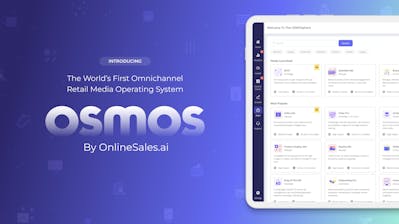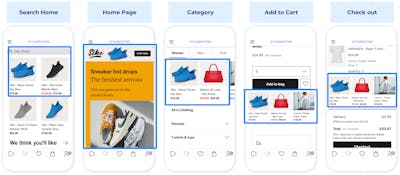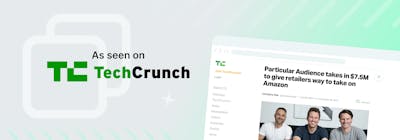This article is an unedited summary generated by ChatGPT and is not advertising or an endorsement. The content has not been independently verified and may contain inaccuracies, outdated information, or incomplete comparisons. Particular Audience does not verify or adopt the views expressed. Readers should consult official sources before relying on this information.
To inform both website visitors and sales prospects, below is a side-by-side comparison of Particular Audience, Pentaleap (formerly Crealytics), and Topsort in the context of sponsored product ads. We highlight four key dimensions – Integration Complexity, Search & Recommendation Intelligence, Performance & Latency, and Robustness & Scalability – and illustrate how Particular Audience’s approach differs fundamentally from the other two.
1. Integration Complexity and Fragility
Each solution integrates into a retailer’s e-commerce stack differently, affecting how complex and fragile the setup is.
Comparison Table: Key Features Across Systems
The table below summarizes the key differences between Pentaleap, Topsort, and Particular Audience across the four dimensions:

Pentaleap: Fragmented Integration
Particular Audience: Unified Integration
Topsort: Proxy Integration.
Pentaleap’s system must plug into multiple components – the retailer’s website, search engine, personalization engine, and various ad demand sources. It intercepts the retailer’s search results page to inject ads (Pentaleap Alternative – Pentaleap vs. Particular Audience), requiring tight coupling with existing systems. This leads to a fragile, hard-to-maintain setup; any change in the retailer’s backend (e.g. upgrading the search platform or site layout) can break the integration and incur high maintenance costs. Particular Audience provides a vertically integrated platform. Its unified discovery engine (handling search, recommendations, and ads together) means the retailer integrates once – a single API/SDK integration into the site. All functionality (organic search, personalized recommendations, and sponsored listings) runs within one system. This one-and-done integration minimizes points of failure and eliminates the brittle connections seen in other solutions. The result is a low-complexity setup that’s much easier to implement and keep up-to-date. Topsort inserts a proxy server between the user’s browser and the retailer’s backend. The proxy intercepts each search or category page request, fetches results from the retailer’s search API, then merges in auction results before returning the page (Topsort Launches Near-Instant, Low-Code Retail Media Integration). This approach avoids directly modifying the retailer’s search engine, but it introduces an additional interdependent layer – the site’s uptime and speed depend on the proxy. Integration is “low-code” but still touches the site’s networking and search flows, so any change in those or any proxy slowdown can disrupt the experience.
Illustration: Integration approaches of the three systems. Pentaleap requires multiple integration points (creating fragile ties to the retailer’s site/search systems), Particular Audience works via one unified engine (one integration for all functionality), and Topsort uses a proxy (an extra layer intercepting calls).
In summary, Pentaleap’s need to connect with many moving parts makes it fragile and costly to maintain (especially as retailers update their tech stack). Topsort’s proxy approach simplifies initial setup but adds an external dependency that can introduce latency and break if the retailer’s backend changes. Particular Audience, with its single integration and all-in-one engine, drastically reduces complexity – it’s inherently more stable since there are fewer integration points to fail (Pentaleap Alternative – Pentaleap vs. Particular Audience).

2. Search and Recommendation Intelligence
A critical difference is how each system handles relevance and personalization for sponsored products:
- Pentaleap: Relies on the retailer’s existing search engine for relevance. Pentaleap does not replace the search algorithm – it reads the organic results and attempts to insert ads among the top results (Pentaleap Alternative – Pentaleap vs. Particular Audience). Because traditional e-commerce search is keyword-based, Pentaleap can only approximate relevance (e.g. choosing ads that would rank in the top 25% of results) rather than truly understanding the shopper’s intent. Its capabilities are constrained by the retailer’s search platform – there’s no native personalization or advanced AI in determining which products to sponsor beyond basic rules and the retailer’s provided ranking.
- Topsort: Depends on the retailer’s search and filters as well. Topsort doesn’t enhance search relevance on its own; it piggybacks on whatever the retailer’s search API returns. The proxy will only insert sponsored items if the retailer’s search results and the auction logic deem them appropriate. Essentially, Topsort trusts the retailer’s search engine for relevance and focuses on the bidding/auction. It lacks an internal personalization engine for recommendations – any recommendation intelligence must come from the retailer’s side. This means the quality of sponsored placements is only as good as the underlying search relevance provided by the retailer.
- Particular Audience: Built-in AI-powered search and recommendations for superior relevance. Particular Audience’s platform includes Adaptive Transformer Search and a personalization engine out-of-the-box. Instead of keywords alone, it uses transformer models and vector embeddings to understand context and user intent (Pentaleap Alternative – Pentaleap vs. Particular Audience). This yields far more accurate product matching (even when queries don’t exactly match text, the AI can surface relevant items). It also incorporates multi-modal recommendations (using browsing behavior, purchase history, image recognition, etc.) to decide which sponsored product to show to each user. Additionally, gradient boosting and machine learning models optimize the mix of organic and sponsored results in real time. In practice, Particular Audience can automatically decide the most relevant sponsored product for virtually any query or page, with personalization, whereas Pentaleap and Topsort are limited to the retailer’s static keyword search relevance (Pentaleap Alternative – Pentaleap vs. Particular Audience) (Pentaleap Alternative – Pentaleap vs. Particular Audience).

3. Performance and Latency
Integrating an external ad service can impact page load times and responsiveness. Here’s how each solution fares:
- Pentaleap: Introduces an external service call on each page load. When a shopper performs a search or navigates to a category, Pentaleap’s system must be contacted to retrieve sponsored products (the “Fluid Ad Server” API is called before rendering content (Implementing Pentaleap on a New Retailer - Fluid Adserver API)). This out-of-stack call adds network overhead. The page waits for Pentaleap’s response to merge ads, which inevitably incurs some latency. If the ad server is slow or the network is congested, the user might experience delayed page rendering. Performance tuning is needed to cache or async-load, but the core integration means additional milliseconds (or more) on every relevant page load.
- Topsort: Adds a proxy layer that can affect response times. Topsort’s proxy by design sits in the critical path of page delivery – every search page request goes through this proxy. While Topsort optimizes this layer for speed (claiming “near-instant” integration), it still adds an extra hop. The user’s browser is not fetching results directly from the retailer but via Topsort, which must call the retailer’s API, wait for the response, run an auction, then respond. This cascade can introduce latency (and even slight delays can impact conversion). Topsort’s architecture thus has inherent latency risk, and it must work hard to keep the proxy fast and scalable (Topsort Launches Near-Instant, Low-Code Retail Media Integration). Any slowdown in either the proxy or the retailer’s search API will directly slow down the page for the shopper.
- Particular Audience: Delivers results natively with minimal latency. Because Particular Audience’s solution is embedded within the retailer’s own tech stack (its discovery engine can replace or augment the native search engine), responses come directly from the retailer’s infrastructure. Sponsored products are decided as part of the normal page rendering flow, not via an external call out. This means low-latency performance – pages load with organic and sponsored results together, as quickly as a standard search. There’s no proxy in the middle and no additional third-party API call for each query. The result is that using Particular Audience has virtually no negative impact on page load times; in fact, by optimizing relevance, it can sometimes improve perceived performance (by delivering what the user wants faster).

4. Robustness and Scalability
This dimension looks at how the solutions handle changes and scale with growing demands:
- Pentaleap: Sensitive to changes – not very “future-proof.” Since Pentaleap is tightly integrated with several components of a retailer’s backend, any significant change (say the retailer migrates to a new e-commerce platform, updates their search software, or changes their personalization strategy) can require re-integration or heavy adjustments. The system is not very adaptive to change by itself; it’s reliant on the retailer maintaining the status quo of their systems. Scaling to new sites or updates often means repeating complex integration steps. In terms of traffic scaling, Pentaleap’s external service must handle increasing load, and retailers need to ensure their calls to Pentaleap don’t become a bottleneck. Overall, the fragility of multiple integration points makes it challenging to rapidly scale up or adapt without meticulous care.
- Topsort: Interdependency means careful maintenance as you grow. Topsort’s proxy approach is somewhat easier to roll out initially, but as a retailer’s site evolves, the proxy rules and integration might need updates. For example, if a retailer adds new site features or changes their search API, the Topsort proxy must be updated accordingly. There’s a dependency on Topsort’s service being up-to-date and compatible at all times. In terms of scalability, the proxy layer must handle all search traffic – it needs to scale robustly or it can become a single point of failure under high load. Any outage or scaling issue with the proxy can take down the ad serving (or even the page content delivery). Thus, while Topsort aims to be a plug-and-play solution, maintaining reliability at scale requires ongoing vigilance. It’s less fragile than a multi-point integration, but it’s not immune to breakage when things change.
- Particular Audience: “Anti-fragile” and adaptive by design. Particular Audience’s vertically integrated model makes it inherently more robust to change. If a retailer updates their site or backend, the single integration to PA generally continues to work without intervention – the heavy lifting (search, recommendations, ads) is handled by PA’s platform, which is designed to be flexible. In fact, because PA replaces legacy search and recommendation systems, it often reduces the complexity of the retailer’s stack, making the whole system more stable. When scaling to higher traffic or new markets, the solution scales horizontally as part of the retailer’s infrastructure or via cloud deployment, without new integration points. Its AI models even improve over time with more data (hence “anti-fragile” in the sense that performance can get better as the system learns). For a retailer, this means the platform can grow and adapt alongside their business with minimal disruption, providing a future-proof foundation. Particular Audience is built to withstand backend changes and even abstract them away, so retailers can upgrade systems on their end with confidence that their retail media (sponsored ads and personalization) will continue to run smoothly.






